Even if you just redecorated a few years ago, some living room trends are already starting to feel tired—and in 2025, they could actually date your space. Design preferences are shifting fast, with people leaning into cozy minimalism, nature-inspired textures, and rooms that feel layered rather than overly curated. That means certain features that once felt sleek or bold might now read as impersonal or stuck in a past design moment. Whether you’re refreshing your home for your own enjoyment or prepping it for resale, here are the trends that may be better left in 2020.
1. All-Gray Everything
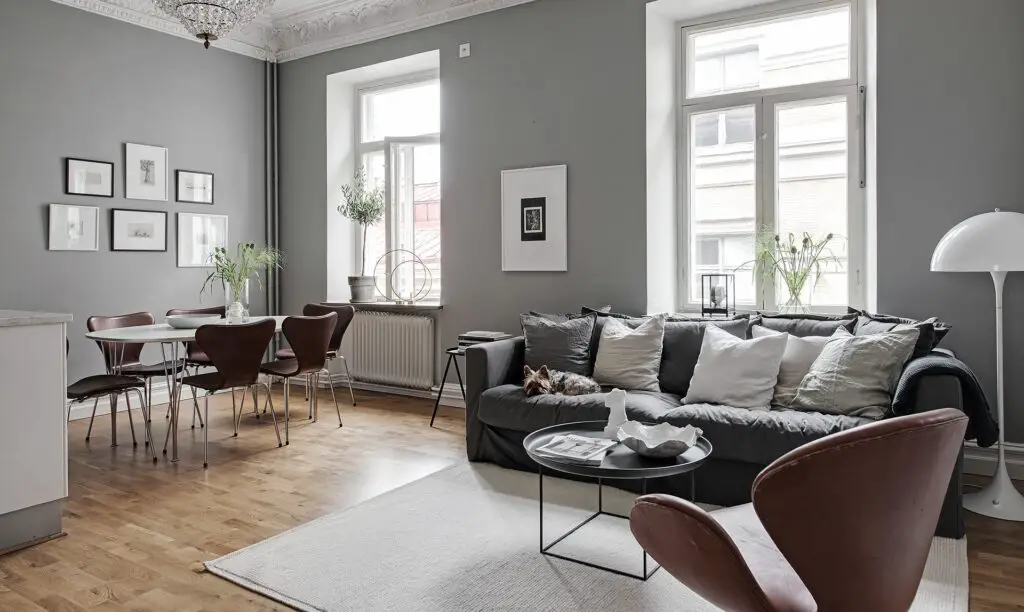
A few years ago, gray dominated living rooms—it was on walls, sofas, rugs, and everything in between. But in 2025, designers are steering away from this one-note palette in favor of warmer tones and more personality. According to Homes & Gardens, potential buyers are responding more positively to color schemes that feel inviting and emotionally warm, like soft creams, sage greens, and clay tones. That means gray-heavy rooms are increasingly seen as cold and dated.
It’s not that you can’t use gray at all—it just needs to be balanced. A charcoal accent wall with colorful furniture, for example, feels more current than a sea of greige. Plus, layering in more natural textures like wood or woven fabrics helps break up the monotony. If everything in your space is a variation of “storm cloud,” it might be time to reintroduce some contrast.
2. Faux Distressed Wood Finishes

Distressed wood had its moment thanks to the farmhouse boom, but now it’s starting to feel a little overplayed. What once looked charming and rustic now often comes across as inauthentic and mass-produced. As noted by Forbes in a 2022 design roundup, the new preference is for natural, high-quality materials—even if they’re simpler or more subtle. Faux aging and cookie-cutter “weathered” pieces just don’t carry the same appeal anymore.
This doesn’t mean you have to replace every wood element in your home. Just be mindful of pieces that look like they’re trying too hard to be vintage. A clean-lined oak coffee table or raw edge wood shelf feels far fresher than something with artificially chipped paint. The shift is toward intentional craftsmanship, not imitation age.
3. Floating Shelves with Nothing On Them

Floating shelves once signaled modernity, but when they’re sparsely decorated—or worse, empty—they now read as unfinished or sterile. In 2025, people are craving layered, lived-in spaces that tell a story. According to Realtor.com, homebuyers increasingly value personality and warmth, even in staged homes. Bare shelves don’t contribute much and can even make a room feel cold.
If you love open shelving, great—but use it to showcase meaningful objects. Books, art, ceramics, or small plants can add visual interest and tell visitors something about you. Just a few well-curated items can make all the difference. When the shelves themselves become the only focal point, they lose their purpose.
4. Oversized Sectionals That Dominate the Room
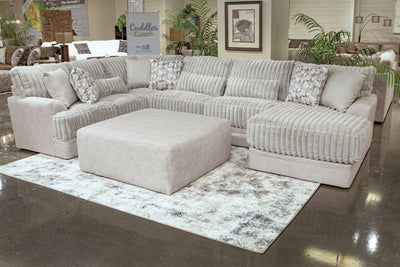
Big, bulky sectionals once signaled comfort and functionality, especially in open-concept homes. But in smaller living rooms—or when there’s no room left to walk—they can make a space feel cramped and off-balance. Better Homes & Gardens noted in 2024 that right-sized furniture and multipurpose layouts are trending, particularly in urban and smaller homes. That means the oversized sectional is starting to lose its grip.
If your sofa takes up more square footage than your entire rug, it might be worth reconsidering. Modular sectionals or a mix of seating types offer more flexibility without overwhelming the room. Plus, they allow for better traffic flow and visual breathing space. You don’t have to sacrifice comfort—you just need proportion.
5. Matching Furniture Sets
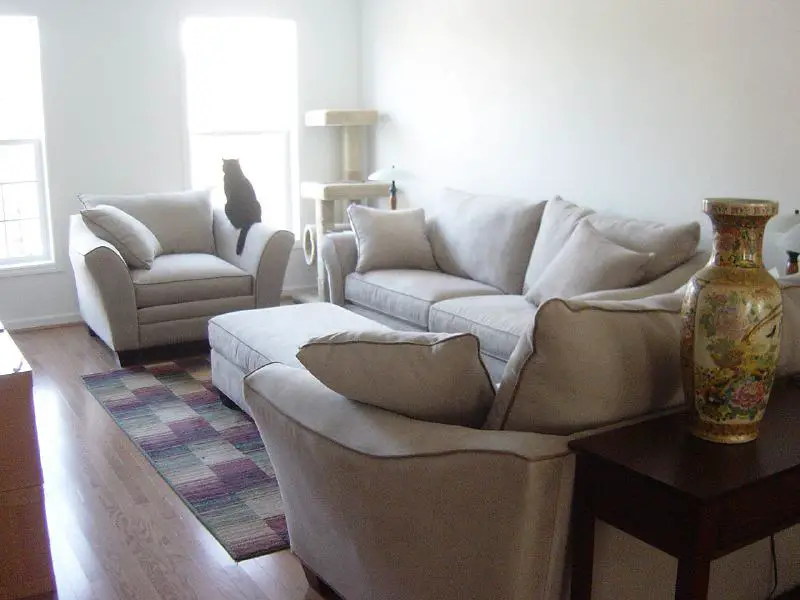
Remember when everything had to match? Sofa, loveseat, armchair, and coffee table—all from the same collection? That kind of uniformity now feels outdated and overly staged. Instead, 2025 is all about mix-and-match pieces that reflect personal style.
Designers and homeowners alike are gravitating toward layered looks that feel curated over time. Think a leather armchair paired with a velvet sofa and a vintage side table. It shows more personality and flexibility than a one-note showroom feel. Matching sets can come off as overly formal or even a little flat.
6. Wall Decals with Inspirational Sayings
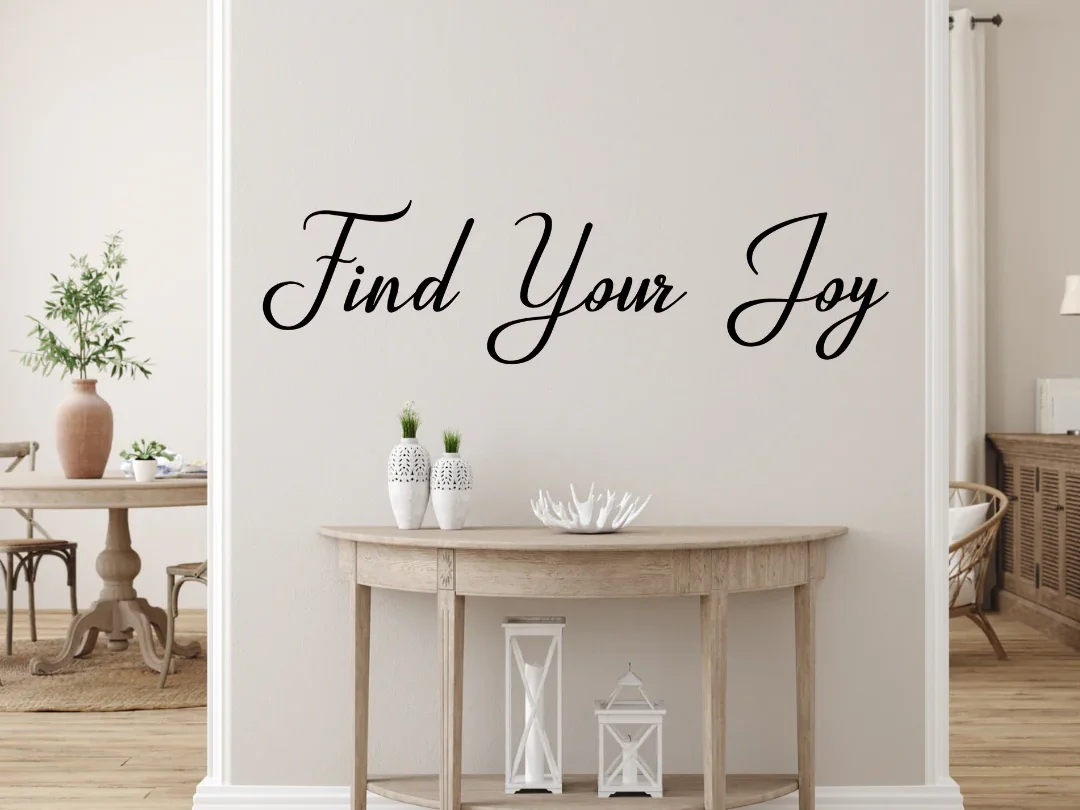
“Live, Laugh, Love” had its day, but that day is long gone. Wall decals featuring scripted sayings now feel overly sentimental—and not in a good way. They tend to make a space look dated, especially when they’re used as a focal point above the couch or fireplace. In 2025, homeowners are moving toward art and objects with more texture and originality.
If you still want words on your walls, go for framed typography or vintage signage. These elements can still express your personality without looking mass-produced. Or better yet, let your furniture and colors do the talking. Subtle storytelling beats obvious slogans every time.
7. Too Much Open Concept

For years, open-concept living was considered the gold standard. But now, many homeowners are finding that completely open layouts can feel chaotic, especially when everyone is home at the same time. More people are craving definition between spaces—even if it’s subtle. That doesn’t mean walls are coming back, but a little separation is in.
Room dividers, rugs, and furniture placement can help create “zones” without full walls. This makes living areas feel cozier and more functional. In 2025, it’s all about designing a space that serves your actual lifestyle. Wide open isn’t always the best fit anymore.
8. Glossy White Everything
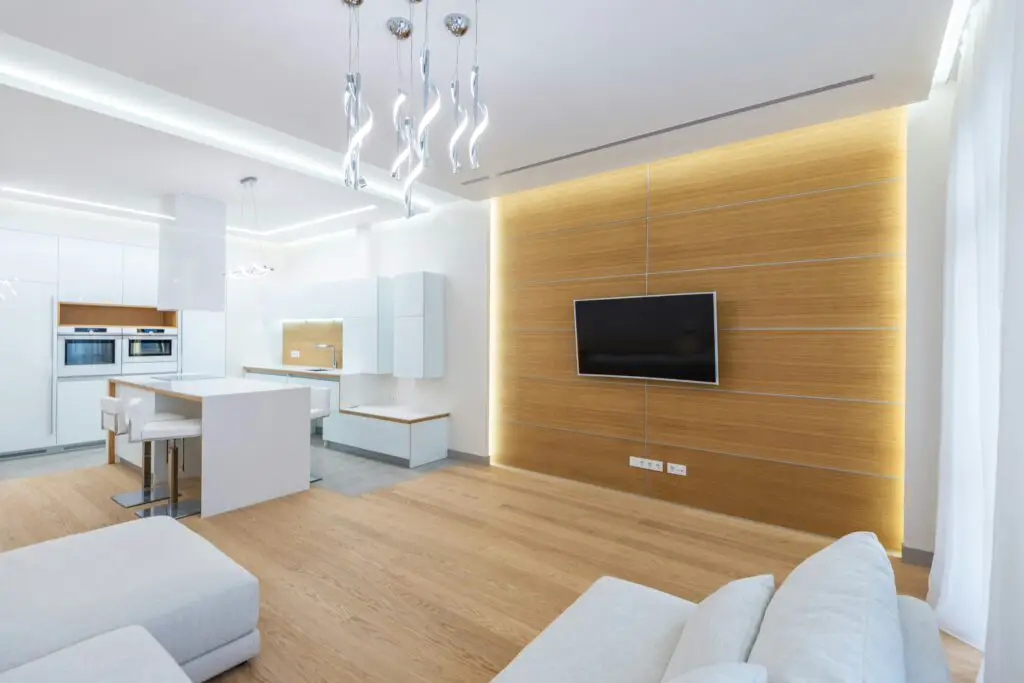
From floors to cabinets to coffee tables, high-gloss white finishes used to scream “modern.” But now they can feel sterile and hard to maintain. Smudges and scratches show easily, and the overall effect can lean a little clinical. In 2025, homeowners are warming up their spaces—literally.
Designers are leaning into cream, beige, and taupe tones, along with matte finishes and natural materials. These create more depth and make rooms feel lived-in rather than showroom-ready. If you’ve got a lot of glossy white, consider swapping in textured accents like linen, wood, or stone. Even small changes can soften the space and make it feel more current.
9. Minimalist Gallery Walls with Identical Frames
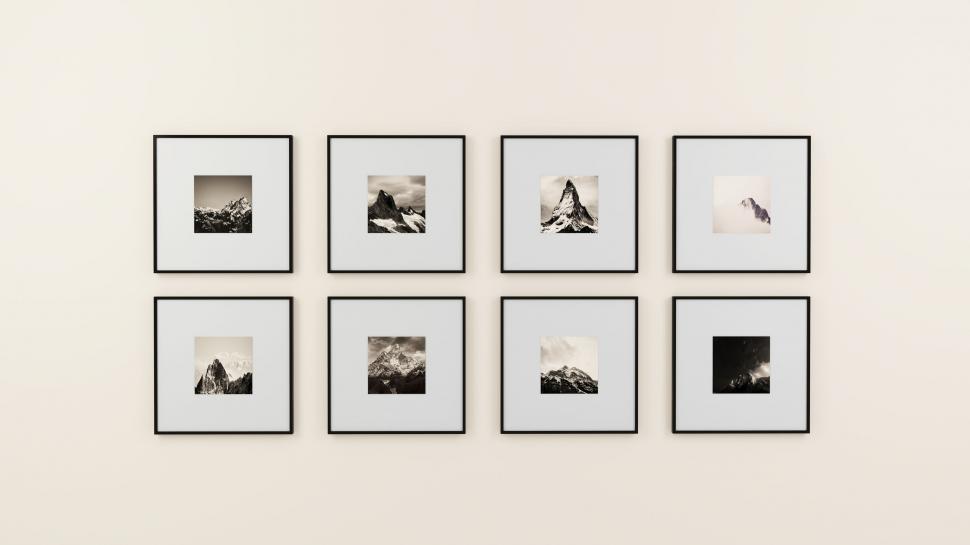
Gallery walls aren’t going anywhere—but the cookie-cutter kind with all black frames and generic prints? Those are aging out. They tend to lack personality and feel too perfectly arranged. In 2025, more eclectic and meaningful gallery walls are in style.
People want to see a mix of frame styles, personal photos, and collected art. The goal is to create visual interest and tell a story—not replicate a Pinterest board. Even if you still like symmetry, add a few organic elements to loosen it up. A gallery wall should reflect your life, not a catalog.
10. Large Clocks as Wall Art
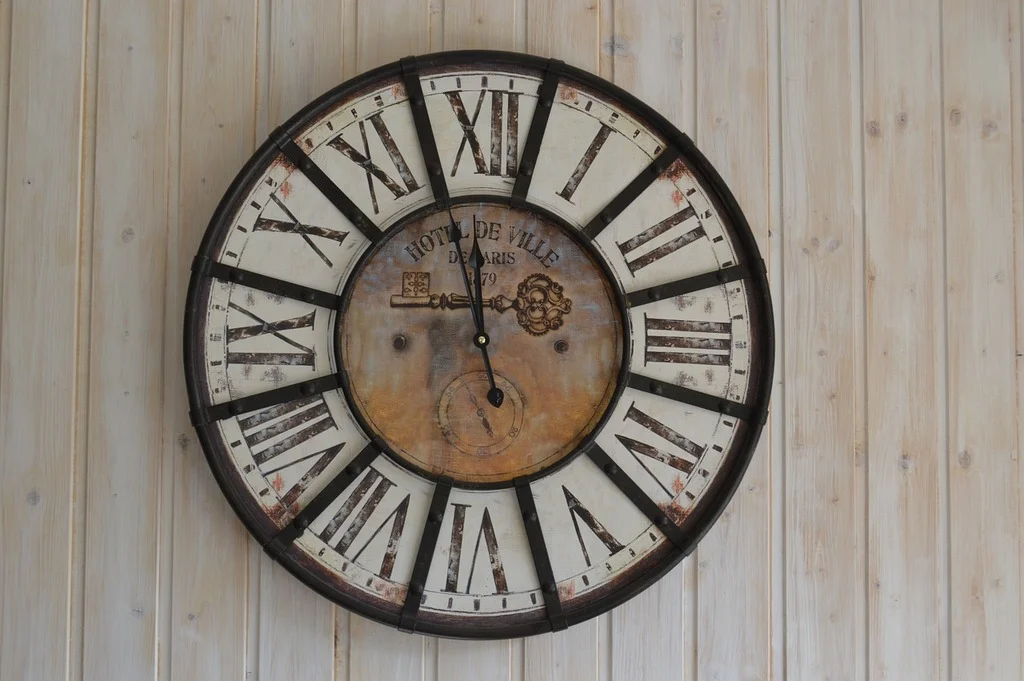
Oversized decorative clocks were once a staple of farmhouse and industrial décor. But now they’re starting to feel more like filler than feature. They rarely serve a functional purpose and often end up collecting dust. In 2025, walls are being used more thoughtfully.
People are choosing pieces that reflect personal taste, like textile art, sculpture, or photography. If you’re still clinging to a giant metal clock, consider replacing it with something that sparks a conversation. Even a small, colorful painting can do more for the space. Time to retire the timepiece.
11. Overly Coordinated Throw Pillows
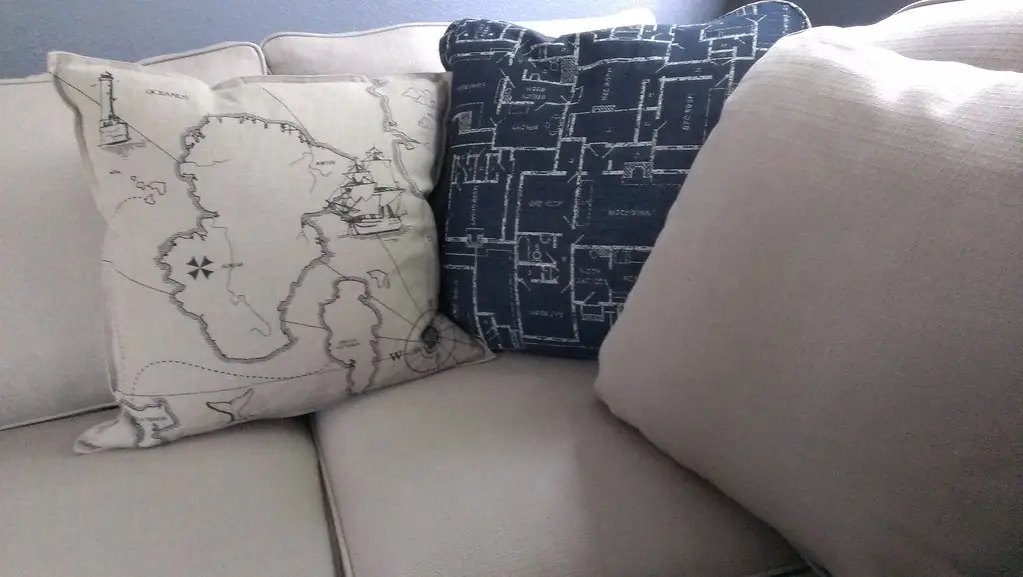
Pillows that match the curtains that match the rug? That’s a little too 2010. Overly coordinated accessories can make a room feel stiff and uninspired. These days, the goal is effortless layering.
Think different fabrics, shapes, and patterns that work together without being too matchy-matchy. A mix of linen, velvet, and embroidery feels much fresher than five identical polyester squares. Texture and contrast are your best friends in 2025. The goal is cozy, not corporate.
12. Shiplap Accent Walls
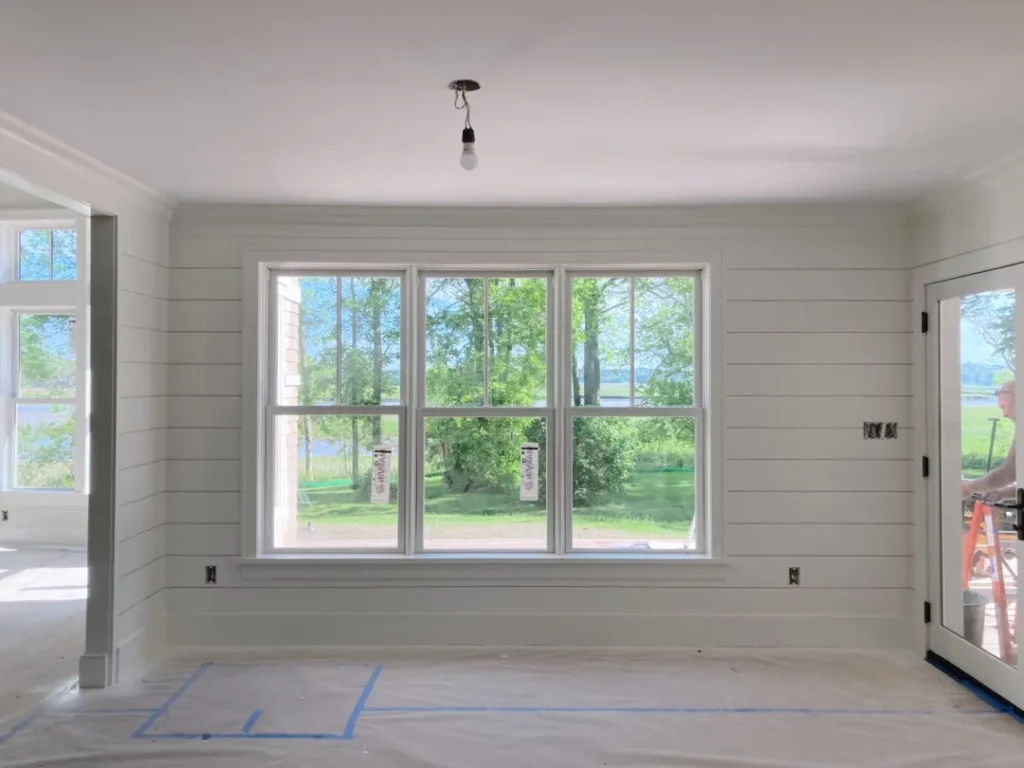
Shiplap is one of those features that became instantly recognizable—and now, instantly dated. What started as a charming nod to historic homes became overused thanks to design shows. These days, it can feel like a default choice rather than a design decision. In 2025, people are favoring more subtle or artistic wall treatments.
Think limewash, grasscloth wallpaper, or even just bold paint colors. If you still love your shiplap, consider painting it a moody tone to modernize it. Or try adding built-in shelves or art to break up the monotony. A little creativity can go a long way in refreshing the look.
13. Faux Fur Throws in Every Corner

There was a time when draping a faux fur throw over every surface felt cozy and chic. But now, it risks looking staged and a bit too trendy. When every Instagram room had one, the effect quickly lost its charm. In 2025, people are leaning into layered warmth that feels a little more real.
Chunky knits, woven blankets, and vintage textiles are replacing the shiny faux furs. They bring in the same cozy energy but with more texture and less flash. And they don’t shed all over your couch. Sometimes, simple really is better.
